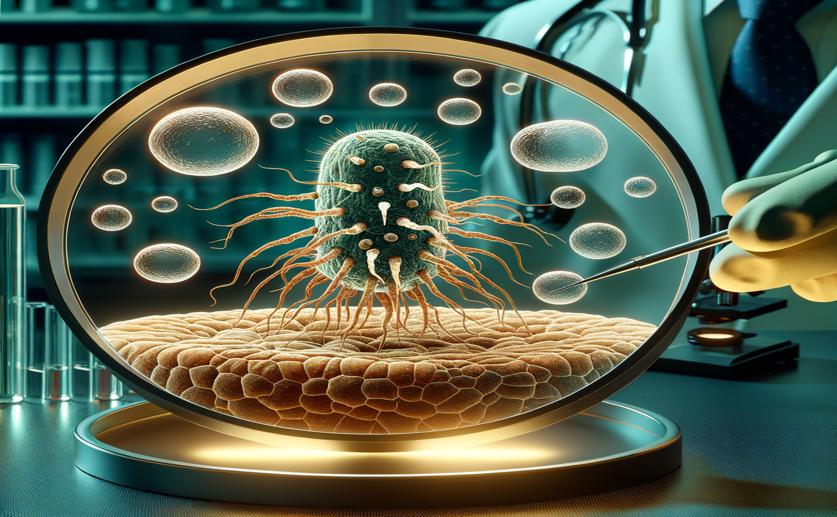
Investigating the Unique Chemical Arsenal of a Plant Disease-Causing Bacterium
Jenn Hoskins
8th May, 2024

Image Source: Natural Science News, 2024
Key Findings
- Researchers at Memorial University of Newfoundland found that the bacterium Streptomyces sp. 11-1-2 produces various compounds that can inhibit the growth of other organisms
- The study revealed that one compound, elaiophylin, increases the toxicity of other bacterial toxins against plants and microbes
- These findings highlight Streptomyces' potential as a source for discovering new bioactive substances, with implications for antibiotic development
References
Main Study
1) Exploring the specialized metabolome of the plant pathogen Streptomyces sp. 11-1-2.
Published 6th May, 2024
https://doi.org/10.1038/s41598-024-60630-5
Related Studies
2) Competition sensing: the social side of bacterial stress responses.
3) Nutrient overlap, genetic relatedness and spatial origin influence interaction-mediated shifts in inhibitory phenotype among Streptomyces spp.
4) Mini review: Genome mining approaches for the identification of secondary metabolite biosynthetic gene clusters in Streptomyces.
5) Genomic basis for natural product biosynthetic diversity in the actinomycetes.



 15th March, 2024 | Jenn Hoskins
15th March, 2024 | Jenn Hoskins